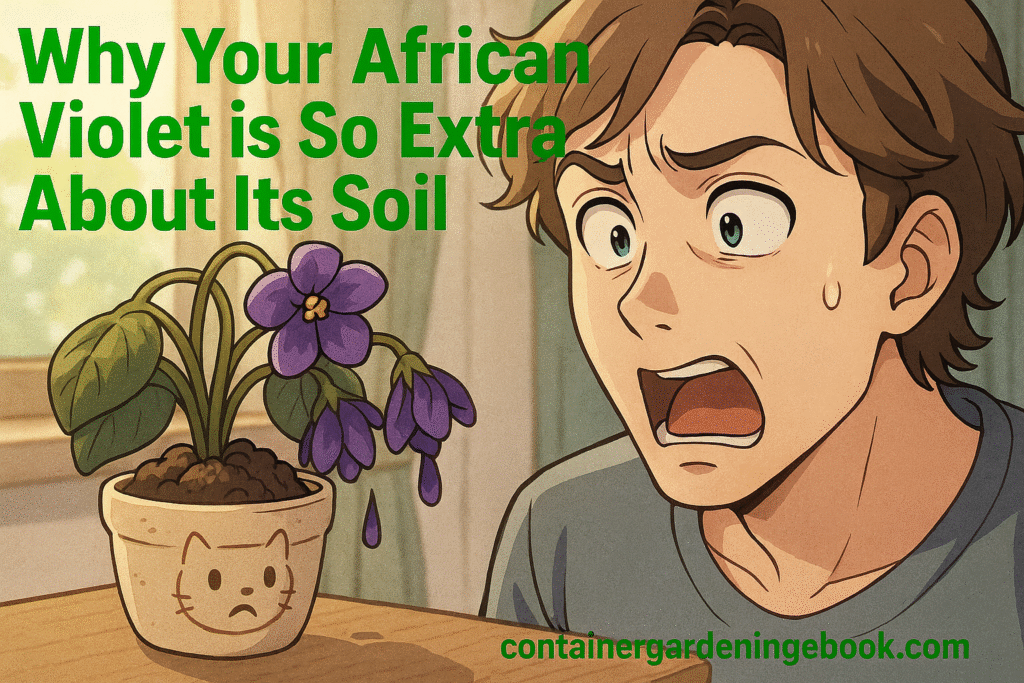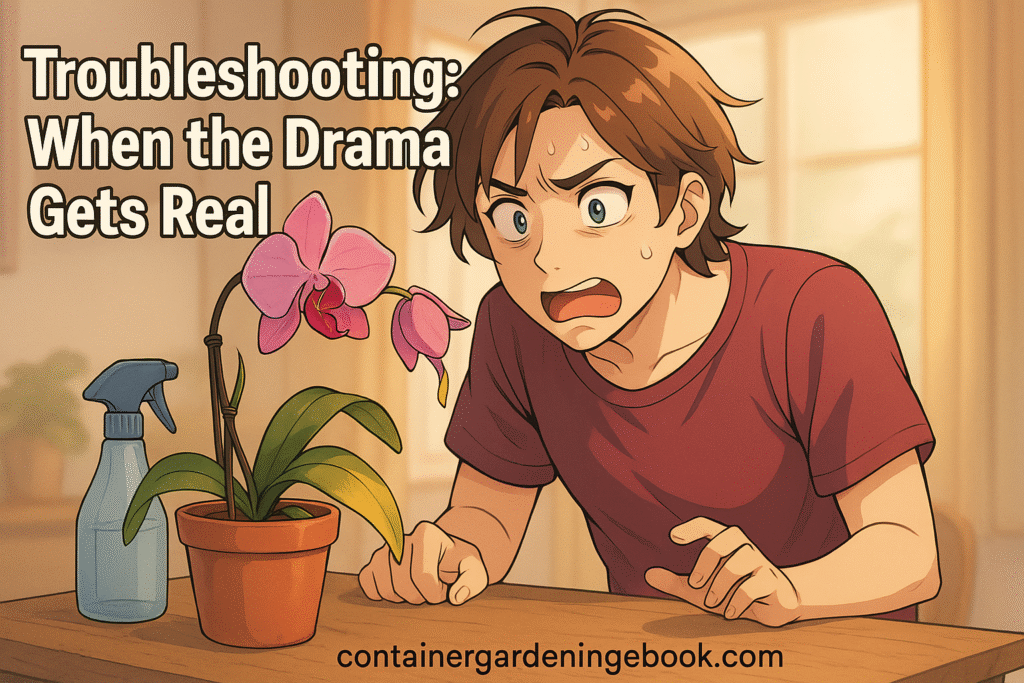African violet potting mix: 1 Ultimate Hack for Drama Queens
Affiliate Disclosure: This post contains affiliate links. If you make a purchase through these links, I may earn a small commission at no extra cost to you. I only recommend products I believe will add value to your gardening journey. Thank you for your support!
African violet potting mix might be the most important relationship you have to manage, especially if you’ve brought home one of these fuzzy-leafed drama queens. Let’s spill the tea. You got an African violet. It was cute, it had those gorgeous little flowers. You named it, gave it a prime spot on your windowsill, and whispered sweet nothings to it. And in return, it’s throwing a bigger fit than a reality TV star. The leaves are limp, it refuses to bloom, and it looks like it’s contemplating a swift journey to the great compost pile in the sky.
What if I told you the secret to ending the drama isn’t some mystical watering schedule or a pep talk? It’s all about the dirt. Or, more accurately, the lack thereof. The key to unlocking a happy, constantly blooming plant lies in the African violet potting mix. Forget everything you know about regular potting soil; for these finicky little beauties, that stuff is basically poison.
Ready to give your plant the ultimate glow-up? Let’s dig in.

Why Your African Violet is So Extra About Its Soil
Your African violet isn’t just being difficult for the sake of it. Its ancestors were bougie, growing on rocky cliffs in East Africa, sipping moisture from moss, not sitting in dense, heavy dirt. Their delicate little roots are not built for your average bag of soil. They need a special environment, and the right
African violet potting mix delivers on three critical points:
- The Need to Breathe (Aeration): The number one way to un-alive an African violet is by drowning its roots. Standard soil gets compacted and waterlogged, cutting off oxygen and leading to the dreaded root rot. A proper African violet potting mix is light and fluffy, full of air pockets that let the roots breathe, even when moist.
- The Moisture Balancing Act (Water Retention): While they hate wet feet, their fine roots can’t handle being bone-dry either. The perfect mix is like a sponge, holding onto just enough water to stay lightly moist while letting the excess drain away freely.
- The pH-abulous Factor (Acidity): This is the secret chemistry lesson you actually need. African violets thrive in slightly acidic soil, ideally with a pH between 5.8 and 6.5. Regular potting soil is usually neutral, which “locks up” essential nutrients. Your plant could be starving in a feast, all because the pH is off.
Choose Your Fighter: DIY vs. Store-Bought Mix
When it comes to sourcing the perfect African violet potting mix, you have two paths.
- Team DIY: The Plant Alchemist. For the control freaks and dedicated plant parents, making your own mix is the ultimate power move. You can control the quality of every ingredient and customize the recipe for your specific environment and watering habits. It’s also way more cost-effective if you have a growing plant family. The downside? You have to buy and store giant bags of perlite, vermiculite, and peat moss.
- Team Store-Bought: The Convenience King. If you’re just starting or have like, two plants, buying a pre-made African violet potting mix is a no-brainer. Brands like Miracle-Gro, Espoma, and Black Gold are made specifically for these plants and are, in theory, perfectly balanced. The catch? Quality can be inconsistent. Many growers complain that commercial mixes are too dense or come with unwelcome guests (hello, fungus gnats).
The Ultimate Hack: The plant community has a brilliant workaround. Buy a bag of commercial African violet potting mix and mix it 50/50 with extra perlite. This instantly lightens the texture, improves drainage, and gives your plant the airy environment it craves without you having to source a dozen different ingredients.
Deconstructing the Magic: What’s in the Mix?
Whether you buy it or blend it, a good African violet potting mix usually contains these three core ingredients:
- Peat Moss or Coco Coir: This is the base. Peat moss is great at holding water and is naturally acidic. However, it’s not the most sustainable choice. Coco coir, made from coconut husks, is the eco-friendly alternative that holds even more moisture and is easier to re-wet.
- Perlite: Those little white crunchy things. This is volcanic glass that’s been puffed up like popcorn. Its only job is to create air pockets for drainage and aeration. It is non-negotiable.
- Vermiculite: This is another mineral that’s been heated to expand. It’s like a tiny sponge that excels at holding onto both water and nutrients, releasing them as the plant needs them.
The Perfect African Violet Potting Mix For You
The #1 reason plants fail is the wrong soil. Use our free tool to create the perfect, custom potting mix recipe for any plant in your collection.
Design Your Custom Potting Mix
Get a step-by-step recipe tailored to your plant’s specific needs for perfect drainage, aeration, and nutrition.
Custom Potting Mix Recipe Designer
Enter the name of your plant, tree, or cactus to get a custom potting mix recipe.

Troubleshooting: When the Drama Gets Real
Before you panic, check the soil. Most African violet problems trace back to the roots.
- Symptom: Limp, wilted leaves, but the soil is wet.
- Problem: Root rot. Your African violet potting mix is too dense and suffocating the roots.
- Fix: Repot immediately into a much lighter mix with way more perlite. You may need to trim off any black, mushy roots.
- Symptom: Yellowing lower leaves and stunted growth.
- Problem: Nutrient issues. The soil is either old and depleted, or the pH is wrong, blocking nutrient absorption.
- Fix: Repot in fresh African violet potting mix. This is the easiest way to reset the clock.
- Symptom: Tight, tiny, stiff leaves in the center.
- Problem: The soil is too compacted, or fertilizer salts have built up, burning the new growth.
- Fix: Flush the pot with plain water to wash out salts. If that doesn’t work, it’s time to repot into a fresh, fluffy mix. And never, ever pack the soil down.
The bottom line? That “finicky” reputation is a total myth. African violets aren’t difficult; they’re just specific. Give them the light, airy, slightly acidic African violet potting mix their ancestors loved, and they’ll reward you with year-round blooms and way less drama. Happy planting!
Feeling Brave? Unlock More Plant-Saving Secrets Here.
So, you’ve officially ended the drama with your African violet and are feeling like a total plant whisperer. Nice. Don’t let that green-thumb high fade! If you’re ready to conquer your other container garden divas or just need more hacks to keep your plant family thriving, we’ve got you. Head over to our blog at https://containergardeningebook.com/blog for more guides and the emotional support you need to keep all your plant babies alive and looking good for the ‘gram.

Leave a Reply